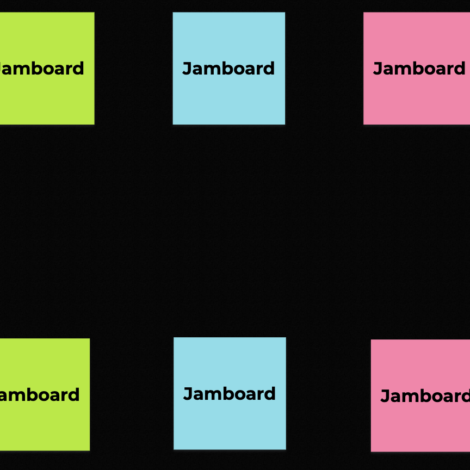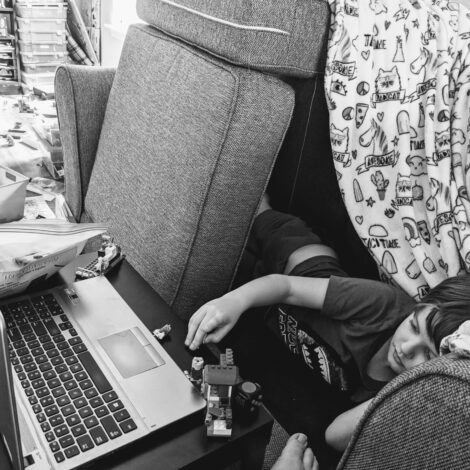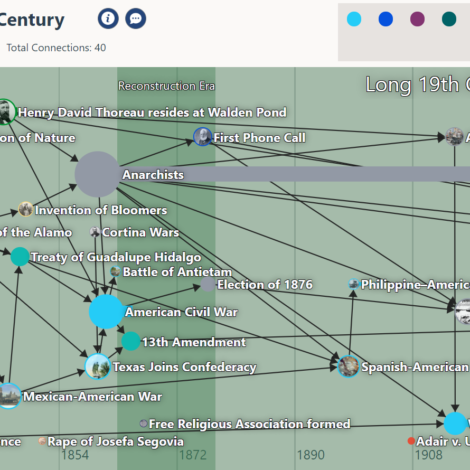Very quickly it became clear that the virtual classroom operated a bit more clunkily than an in-person class. Classes were missing the chatter or just the noises of people inhabiting a room together that precede in-person classes. I love starting each semester with a silly icebreaker, and this fall was no different. I asked students if they shrunk down to the size of AntMan, what insect would they want to ride and why? Answers ranged from terrifying bugs to scare off predators to riding monarchs to see the world during their migration. In both my undergrad and grad classes, students
Jamboards: Collaborating Together Online
After a long time away (and the year of all years), I’m happy to reenter this space to reflect a bit on some of the teaching tips and tricks that have gotten me through this past year, and especially on those that will continue to be useful after we’ve returned back to in-person teaching (or some type of hybrid teaching). One of my favorite tools I’ve adopted this year is Google’s Jamboard. Jamboard provides a collaborative digital whiteboard platform, with tools to add sticky notes, text, images, and free-form drawing. It’s free to use, and just requires a Google account
Brain Breaks and Birdhouses: What I Learned from 1st-2nd Grade Virtual Maker Camp
If you asked me six months ago how I envisioned summer break, I’d probably have told you about swimming at pools and lakes, hanging out with my kids, and, best of all, the days my kids would be spending together at summer camp. Thanks to #covid19, most of that isn’t happening. Instead, my 7-year-old has been doing a virtual KSU iTeach Makercamp this summer, and he’s had fun making things like birdcages and musical instruments and robot claws (and 2yo has had fun building his own versions too). So what can we learn from a virtual summer camp for kids
Thinking Critically with ClioVis
ClioVis creator, Dr. Erika Bsumek, an associate professor at UT-Austin, recently joined us on campus to lead a workshop on using ClioVis, an interactive digital timeline tool. Like TimelineJS and other digital timeline tools, you can plot points on a timeline, create summaries of those items, and attach images to them. ClioVis goes above and beyond these other tools in a few big ways: it’s much more interactive and allows users to create connections between items the interface is very easy to use it’s easy for students to collaborate in groups. It’s clear that Bsumek is passionate about pedagogy and
Jigsawing: Piecing the Story Together
This has to be my alllll-time favorite teaching method. There’s just something about it that gets students engaged in conversation, and they always get super animated in teaching their peers and giving detailed examples. With this method, groups of students each read a different section / chapter. They group together in class first with those who read the same thing as them and unpack the reading, and then they’re divided up to teach their peers in groups. This can be modified in lots of ways (students can read / prep in class, etc.), but we’ll start with a basic approach.
Becoming Better Notetakers
I remember early in my Ph.D. program I was frustrated with a dissertation chapter I was writing. I went with my intuition and produced a giant concept map of what I wanted to say. I finished the diagram with a sigh of relief — the chapter made sense now. But I still felt guilty like I was doing something wrong. Real writers didn’t use concept maps, right? I’m not sure anyone ever taught me how to take notes productively, certainly not after elementary/middle school, and I still struggle with notetaking today. I’m a chronic over-highlighter, and I have a hard
Participate, PLEASEEEE
You know that all-too-familiar silence after asking a question in the classroom, where you are just pleading with someone, anyone to respond? Yeah, me too. It especially bugs me when I KNOW students have prepared for class and have things to say. I’ve always aimed to have every student speak in some way in every class, even if it’s just with a partner, and here are a few tricks I use to boost engagement in smaller classes (classes under 30 students) Stand up, sit down: For a question that has speedy answers (think: brainstorming a list), ask the class to
Annotating Readings with Hypothesis
In my classes, I like employing strategies that promote deep reading. I started using Hypothesis in one of my graduate classes this semester to help students connect with concrete quotes from the text while also analyzing and reflecting on them. This system has the additional benefit of holding students accountable to engaging with the assigned readings. Annotating with hypothesis also offers a social component, one that extends the discussion of course materials outside of the classroom. Mia C. Zamora, an Associate Professor of English and Director of the Kean University Writing Project, explains that tools like Hypothesis “extend the discursive
Infographics
As we are inundated with data via infographics and other visualizations, it is essential that students learn to read and analyze these types of visual communication. Analyzing sample infographics in your field and introducing students to Randy Olsen’s “Infographics Lie. Here’s How To Spot The B.S” can help students critically engage with these types of visualizations while developing important visual literacy skills. I love using assignments that ask students create real world products, not only because it provides them the opportunity to develop valuable life skills, but also because it allows them to communicate with audiences beyond our classroom. Asking students










